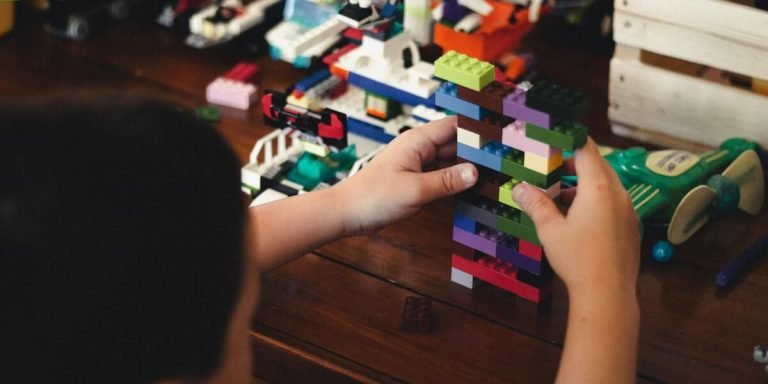Is Autism a Learning Disability? Understanding the Difference for Better Childhood Education
Misunderstandings often surround the question, “Is autism a learning disability?” While both Autism Spectrum Disorder (ASD) and Learning Disabilities may impact a child’s educational journey profoundly, it’s pivotal to realize that they are not interchangeable. In fact, understanding this distinction is crucial in providing effective special education resources and support.
This article aims to elucidate the differences between ASD and Learning Disabilities while shedding light on how cognizance of these variations can lead parents and educators towards creating an optimized learning environment for children with either condition. The ultimate goal should always be fostering growth through harnessing individual strengths despite any diversities present in their educational experience.
Did you know?
Autism Spectrum Disorder (ASD) is a developmental disorder that affects communication and behavior, not the same as an intellectual disability or a specific learning disorder. The National Center for Learning Disabilities states this clearly.
Understanding the Relationship Between Autism and Learning Disabilities
Autism and learning disabilities, often misunderstood as being synonymous, are separate conditions that require specific attention in an educational context. Autism Spectrum Disorder (ASD) largely affects social interaction and communication skills while learning disabilities inhibit a child’s ability to process information at the same pace as their peers.
Over recent years, with advances in education technology systems like AI-enabled modules or specialized e-learning programs tailored for special needs kids, have proven beneficial. These tools create personalized experiences catering to each student’s unique strengths and weaknesses thus reducing potential stressors associated with traditional classroom environments. They encourage inclusivity by providing students on the autism spectrum opportunities to learn at their own pace without feeling pressured which may help bridge the gap between them and their neurotypical counterparts.
Specifically designed technological resources focused on ASD can serve not only children but also parents who seek further assistance outside of conventional classrooms thereby promoting substantial growth within these youngsters minds beyond school walls too. In 2023, it is evident that integrating such technologies into childhood education serves greatly towards creating balanced inclusivity especially for those diagnosed with autism or other related disorders.
Clarifying Common Misconceptions
Often there are several misconceptions surrounding Autism and Learning Disabilities. One of the most common mistakes is labeling autism as a learning disability. Though interrelated in many ways, they possess distinct differences which demand unique approaches for effective education.
Learning disabilities typically pertain to issues like dyslexia or attention deficit disorder- where an individual struggles specifically within conventional academic areas such as reading or math despite being average or above-average intellectual ability. On contrary, individuals with ASD usually have uneven skill development – excelling phenomenally at one aspect while struggling tremendously on another.
This divergence demands specialized educational resources and support tailored precisely towards addressing these unique set of needs rather than adopting a generic approach designed for typical ‘learning disabled’ cases.
With 2023 already seeing significant advancements in digital educational resources customized for special-needs students spanning across varying developmental conditions including Autism; early identification coupled comprehensive therapeutic intervention promises significantly better outcomes than ever before!
Differentiating Characteristics of Autism Spectrum Disorder
Autism Spectrum Disorder (ASD) and learning disabilities are two separate entities. They have similar symptoms but differ in several essential ways.
The question – “is autism a learning disability?” often arises, primarily due to some overlapping characteristics between the two conditions. To differentiate these distinct categories of developmental disorders, let’s examine key aspects that define Autism Spectrum Disorders.
Firstly, ASD is distinguished by persistent difficulties in social interaction and communication across multiple contexts. Children with ASD may find it challenging understanding non-verbal cues or maintaining eye contact during conversation. Conversely, children having specific learning disabilities might not face any challenges interacting socially but struggle significantly more with academic tasks such as reading, writing or math calculations.
Navigating Educational Resources for Children with Autism
Navigating educational resources for children with autism in the current era of technology integration can be both challenging and rewarding. As we explore our digital landscape, one crucial question to consider is: Is Autism a learning disability? The answer isn’t as straightforward as you might think.
Traditionally, autism has been categorized more as a developmental disorder than a learning disability. It impacts communication skills and social interactions but doesn’t affect an individual’s ability to learn per se – that’s where technology comes into play. Augmented reality tools, assistive devices like tablets or software designed specifically for autistic learners have broadened prospects significantly now compared to previous years.
Understanding this distinction helps us approach educational strategies more effectively especially when navigating special education resources support geared towards children on the spectrum in 2023’s tech-led teaching settings. Mapped out correctly, harnessing technological innovation could prove transformative not just academically but also socially enabling these young minds towards better interaction and engagement levels during their school hours.
Identifying Supportive School Programs and Services
Identifying supportive school programs and services plays a pivotal role in children’s education, especially those diagnosed with Autism Spectrum Disorder (ASD). It is important to ponder on the question “is autism a learning disability?” as it forms the base for understanding how your child can benefit from special educational resources. ASD poses unique challenges that may affect their cognition, social interactions and communication skills.
Technological advancements have played an impressive part in integrating more effective ways of educating these young learners. In 2023, we find several schools investing heavily into technology platforms that are tailored towards creating engaging virtual classrooms; providing interactive lessons designed for students who learn differently.
An excellent starting point lies in finding out which services are available within public or private schooling systems. Many offer Individualized Education Programs (IEPs) focusing on enhancing specific areas wherein individual children might be struggling like speech therapy sessions or occupational therapies all facilitated virtually using latest tech innovations if needed.
Moreover, online courses continue growing exponentially owing mainly due its convenience factor alongside offering customisable options suiting different kids’ needs thereby ensuring no student is left behind regardless of his/her abilities.
Utilizing Assistive Technologies in Special Education
With an increase in the prevalence of autism, parents and educators often wonder – is autism a learning disability? In reality, while some children with Autism Spectrum Disorder (ASD) may indeed have specific learning disabilities, it’s central to understand that not all do. It’s more accurate to consider ASD as a developmental disorder that affects how individuals perceive and socialize with others.
In this context, technology integration plays a vital role in aiding education for children with autism. Special education resources such as assistive technologies provide innovative solutions tailored towards their unique needs.
Assistive technologies encompass tools designed to help students who struggle due to various reasons including physical impairments or cognitive problems like those encountered by autistic learners. These devices can range from simple aids like color-coded keyboards to advanced software applications specifically developed for special educational purposes.
For instance, visual scheduling apps are practical tools teachers use when teaching kids on the spectrum since they thrive best within structured environments. These digital platforms illustrate daily routines visually thus helping them predict what comes next thereby reducing anxiety levels drastically over time.
Perhaps one of the most transforming elements delivered through tech-integration is personalized instruction facilitated via interactive computer programs smartly built around individual student’s progress rates ensuring every learner benefits based on their abilities rather than struggling alongside pace-setters.
Developing Individualized Education Plans (IEPs) for Students with Autism
Developing Individualized Education Plans (IEPs) for students diagnosed with autism is an integral aspect of contemporary educational systems. Despite the common misconception, Autism isn’t classified as a learning disability but rather it’s a neurodevelopmental disorder characterized by distinct social interaction difficulties, communication challenges and tendency towards repetitive behaviors. However, these characteristics can affect both the process and speed at which they learn new information.
Our understanding of individual needs grows increasingly refined with developments in technology integration within education practices over recent years. Technology has been instrumental in creating tailored teaching methodologies that are specific to each child depending on their unique requirements determined through rigorous assessments conducted by professionals following evidence-based protocols.
Developing Individualized Education Programs (IEPs) involves consulting with parents and educators. The process also uses advanced technologies, like assistive tools such as iPads or apps designed specifically for individuals with Autism Spectrum Disorder (ASD). Professional expertise combined with innovative software creates optimal academic environments. These environments foster growth under guidance that mirrors real-world scenarios and sensitively considers special needs. They ensure every student has the necessary resources for continued support to achieve their highest potential.
Such technological advancements embody hope for many families dealing with ASD enabling access to high-quality special education resources regardless of geographical location or financial status. These tools not only benefit children academically but also help enhance other crucial skills – building concentration levels improving motor coordination boosting self-esteem instilling confidence paving way towards better overall development.
Tailoring Strategies to Accommodate Unique Learning Needs
An IEP tailored to address unique learning needs has become even more crucial in recent years, especially when focusing on technology integration and education. Embracing technological innovations as part of educating autistic students can support their educational journey significantly.
The primary goal here isn’t just about incorporating shiny new gadgets into the classroom but utilizing specific tools that aid the accommodation of these special learners’ distinct requirements. For instance, assistive technologies like ‘read aloud’ software or adaptive mouse systems enhance accessibility while simplifying tasks that might be challenging for ASD students.
In addition to tech integrations, digital platforms also offer a wealth of Special Educational Resources and Support networks which educators can tap into garnering insights about best practices or gaining advice from peers dealing technologically integrated classrooms successfully before.
Autism may be viewed by some as a learning disability due to its impact on traditional academic performance; however, today’s understanding sees it instead as an alternative way through which individuals process information. Thus allowing them potential success paths not strictly confined within standardized norms – especially so when aided with well-crafted IEPs enriched via suitable tech inputs.
Engaging Parents and Caregivers in the IEP Process
The process of developing an individualized education plan (IEP) for a student with autism is not just the responsibility of teachers and specialists. It’s crucial to engage parents and caregivers as active participants in this process. This collaborative approach can contribute significantly to fostering personalized learning experiences that address each child’s unique needs.
In line with the question, “is autism a learning disability”, it’s essential first to recognize that yes, autism does fall under special educational provision based on its impact on a child’s educational performance. Consequently, students diagnosed with Autism Spectrum Disorder are entitled to IEPs designed around their specific requirements.
To involve parents effectively in creating these specialized programs, transparency should be prioritized from both ends – educators sharing information about available resources and support while taking into account insights proffered by parents who know their children best.
One way we do this in 2023 is leveraging available technology integrations within our classrooms which facilitate better communication between school personnel & families regarding IEP developments or adjustments needed over time.
Video conferencing tools like Zoom or Google Meet have revolutionized how meetings involving multiple stakeholders take place making these consultations convenient without sacrificing direct interaction vital for dealing comprehensively with pertinent issues relating directly towards successful implementation of agreed-upon strategies within respective Individual Education Plans.
Conclusion
In conclusion, the question of “is autism a learning disability?” is far from black and white. Instead, it’s an interplay of unique characteristics that fit into both categories yet demands tailored attention in childhood education approach. The bottom line?
Whether you’re dealing with Autism or other Learning Disabilities, understanding each child’s unique strengths and struggles are key to their success.
But don’t stop here! Dive deeper on our website where we explore these topics further – offering invaluable advice for parents and educators alike navigating this complex landscape. Our well-researched articles provide insights not only about educating children but also lend support to those adults guiding them through their journey; because the best way forward lies in collaboration – together we can shape fruitful futures!
So go ahead, browse around – empowerment awaits at your fingertips.







